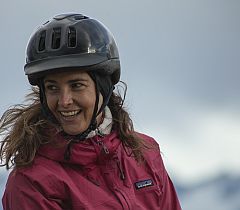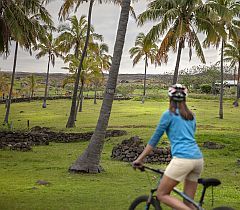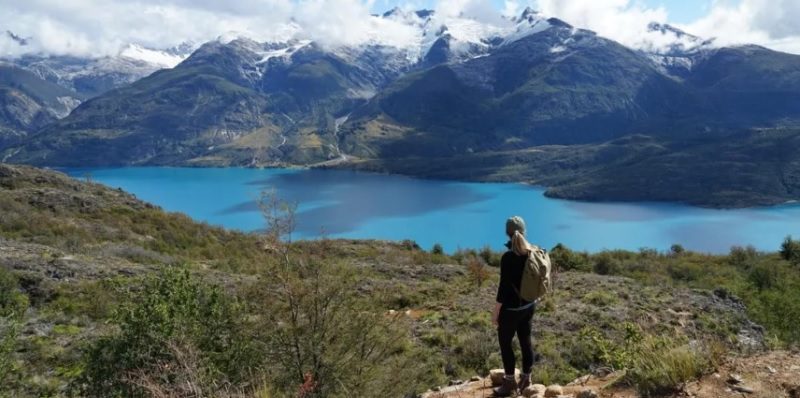
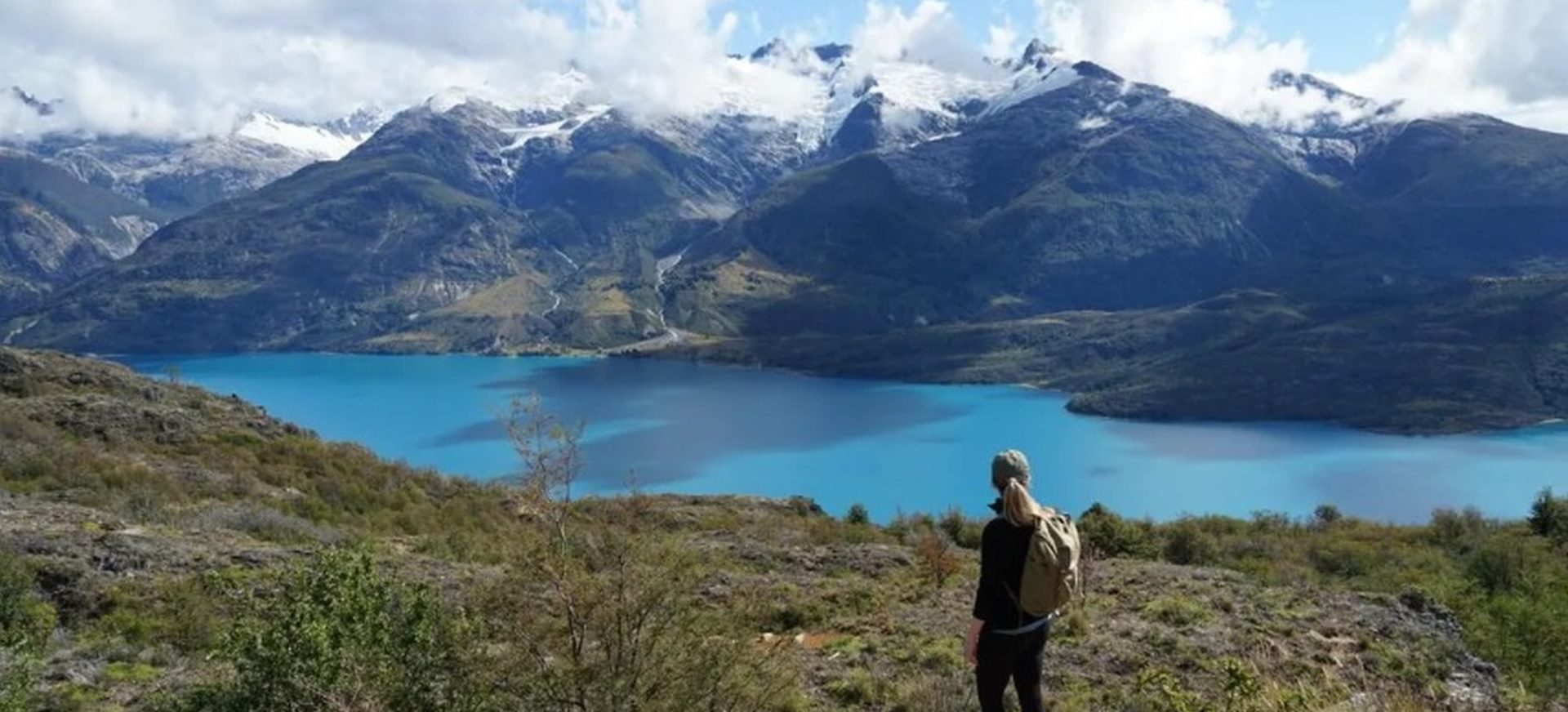
The vast, remote landscapes of Chile’s rugged Aysén region rekindle a sense of adventure.
By Chloe BergeSpecial to the Star
In the rearview mirror, two lonely cyclists weighed down by camping gear are swallowed in plumes of dust rising off the gravel road like smoke. The jade crowns of coigue trees join arms overhead, and giant, dirt-caked rhubarb plants flank the roadside as our 4×4 truck dodges the gouges and trenches of the Carretera Austral, Chilean Patagonia’s southern highway.
In an area of Chile considered one of the world’s most remote outposts, the Aysén region may be Patagonia’s wildest sliver. While many travellers make a beeline for the postcard scenes of Torres del Paine National Park in the south, this lesser-known region is still a secret. It’s the sort of vast, far-flung place that made me fall in love with travel.
As a writer, I’ve sought out assignments that took me out of my comfort zone: I’ve journeyed to India solo, trekked through the Jordanian desert and hiked Rwanda’s tangled jungle in search of mountain gorillas.
But during the pandemic, my world got smaller, and with it my threshold for risk dwindled. Even after vaccines had rolled out and travel advisories were lifted, I was still drawn to safe, familiar places and found the logistics of pandemic travel overwhelming. I declined invitations I normally would have accepted without skipping a beat. Everything had changed — had I?
Lured by the promise of pristine wilderness, and determined to resurrect my sense of adventure, my husband and I decided to embark on a 10-day trip through Aysén, driving from Balmaceda Airport near Coyhaique down to Cochrane.
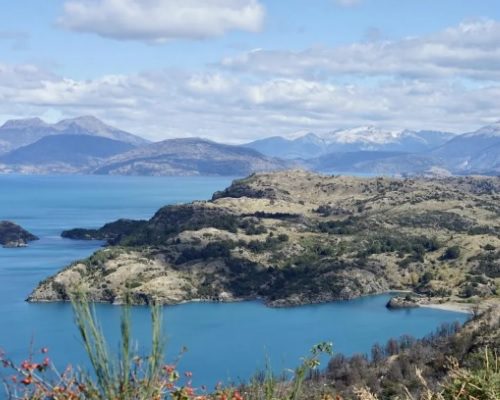
The first leg is blissfully paved, but this doesn’t last long. A rumpled dirt road snakes through a hilly landscape where rounded nirre trees grow like limes on the mountainsides, and peaks are streaked blue, mauve and red from mineral deposits.
Around the next bend, the crenellated spires of Cerro Castillo National Park glow golden in the afternoon light. The park is part of the Route of Parks of Patagonia, created by the non-profit Tompkins Conservation to protect and restore 28 million acres of forest, wetlands, ice fields and fjords in Chile. We keep our eye out for huemul, the endangered South Andean deer that lives here.
We don’t spot any deer, but we do take in another sight, the Paredón de las Manos (“Wall of Hands”), just outside the small pioneer town of Cerro Castillo. We follow a dusty trail flanked by heady sage up to an ancient cliffside.
The rock face is emblazoned with hundreds of red ochre handprints made by the area’s Indigenous Tehuelche peoples 5,000 years ago. It’s this sense of deep time and primordial nature that overwhelms with its magnitude here in Patagonia. I feel a familiar spark of excitement, eager to unearth more of the region’s hidden enclaves.
Our bone-rattling drive continues south through lush forest and up over a rocky bluff overlooking the Ibáñez River valley. The vertiginous track follows nail-bitingly narrow hairpin turns, and as the landscape turns tawny and arid, we catch our first glimpses of the brilliant turquoise General Carrera Lake.
Along its hem is Mallin Colorado, a family-run ecolodge. Behind the property, trails shaded by lenga and nirre trees festooned in Spanish moss carve up the hillside. Tiny tangerine butterflies escort us up to a viewpoint overlooking the Cordón Contreras mountain range and its hanging glaciers. Only the hollow tap-tap-tap of the scarlet-headed Magellanic woodpecker echoes in the silence.
The lake beckons, and we paddle the choppy shoreline in kayaks out to the Marble Caves, where thousands of years of waves and rain have sculpted calcium carbonate into architectural arches and tunnels. Swirls of grey and blue paint the marble, reflecting the luminescent water as we paddle through and around the caves.
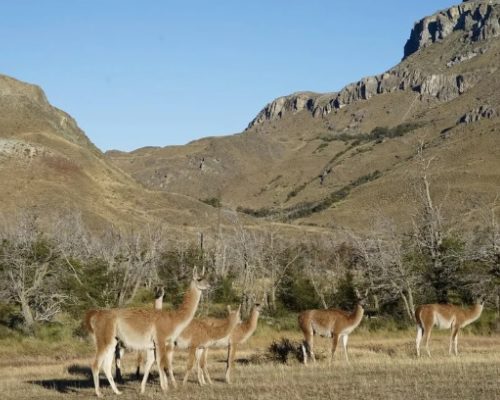
Later, we stop just outside the small town of Puerto Bertrand, hypnotized by the surreal, Kool-Aid-blue Baker River. I have to get out on the water, and we hire a guide from one of the small rafting companies that dot the main beach. Sharing a raft with a Spanish couple, we paddle through the frothing rapids.
“Don’t worry, it’s safe,” says our guide, Javi, who must have seen my jaw drop at the metre-high waves up ahead. My paddle is rendered useless as the raft bucks and dives through the swells, and our group whoops and hollers. I let myself relinquish control, exhilarated.
Nearing the end of our trip, we come to a roadside sign for Patagonia National Park — the newest in the Route of Parks — where an entirely different landscape emerges. Rolling pampas sweep towards towering mountains and a cloudless blue sky.
With very few tourists here, it’s the resident guanacos (a wild camelid related to the llama) that greet us as we arrive at the Explora lodge inside the park, gathering around the property’s slender golden poplars.
Over the next few days, we hike deep into the landscape of the 750,000-acre park. As we work our way up through the steppe on the 23-kilometre Laguna Altas Trail, we pause before a shrub dotted with tiny purple berries. “It’s said if you eat the calafate berry, you’ll return to Patagonia,” says our Explora guide, Manuel Montti. I immediately pop a few in my mouth, savouring their tart sweetness.
Continuing our climb through lenga forest tinged red by the early autumn air, we spot a tiny pygmy owl blinking its amber eyes at us from a branch. Drenched in sweat after a 1,200-metre ascent, we finally reach the ridgeline where two condors wheel through the blue sky.
Between craggy rocks, the first in a string of mountaintop lakes sparkles like a sapphire. Astonishingly, we have the trail entirely to ourselves. There’s nothing between me and the endless mountains ahead.
On the Avilés Trail the following day, we trek a path once used by early settlers moving livestock through the Avilés Valley. We track the ghosts of gauchos — South America’s legendary cowboys — through forested hillsides and across umber mountaintops, stopping to inhale the bright citrus scent of paramela bush that blooms on the riverbanks, which the horsemen gave their loved ones. Out here, there’s a sense of lawlessness that rides on the rasping wind carving through the grasses.
Patagonia feels like one of the planet’s last frontiers, a place where you could forget who you once were and disappear into the wild. I decide to leave my trembling pandemic self behind here, like a vagabond on the side of the road. Watching the endless pampas and glacier-fed rivers recede as we drive away, I catch my eyes in the side mirror. I feel a little wilder, too.
Accommodation was provided to writer Chloe Berge by Mallin Colorado and Explora, which did not review or approve this article.
Read the Toronto Star article here.
